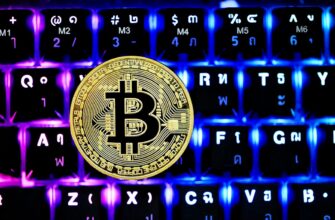- Why Use Bitcoin for Everyday Purchases?
- Step-by-Step: Buying Bitcoin for Spending
- 1. Choose a Bitcoin Wallet
- 2. Select a Reputable Exchange
- 3. Complete Verification (KYC)
- 4. Deposit Funds & Buy BTC
- 5. Transfer to Your Personal Wallet
- 6. Making Purchases with Bitcoin
- Pro Tips for Spending Bitcoin Wisely
- Understanding the Risks
- FAQ: Buying Bitcoin for Purchases
- What’s the fastest way to buy Bitcoin for immediate spending?
- Can I buy Bitcoin anonymously for purchases?
- How much Bitcoin should I buy for everyday purchases?
- Where can I actually spend Bitcoin?
- Are Bitcoin purchases secure?
Why Use Bitcoin for Everyday Purchases?
Bitcoin isn’t just an investment asset – it’s becoming a practical currency for real-world transactions. From online retailers to local coffee shops, over 15,000 businesses globally now accept BTC payments. Using Bitcoin for purchases offers advantages like lower international fees, faster cross-border transactions, and enhanced privacy compared to traditional payment methods. This guide walks you through buying and spending Bitcoin securely.
Step-by-Step: Buying Bitcoin for Spending
1. Choose a Bitcoin Wallet
Your digital wallet stores Bitcoin keys. For spending convenience, consider:
- Mobile Wallets (e.g., Exodus, Trust Wallet): Best for everyday purchases with QR code scanning
- Hardware Wallets (e.g., Ledger, Trezor): Top security for larger holdings
- Exchange Wallets: Only use for small, immediate spending amounts
2. Select a Reputable Exchange
Compare platforms based on:
- Fees (aim for under 1% per transaction)
- Payment methods (bank transfer, debit card, PayPal)
- User experience (Coinbase and Kraken are beginner-friendly)
3. Complete Verification (KYC)
Most exchanges require:
- Government ID scan
- Proof of address
- Selfie verification
Process typically takes 5-30 minutes.
4. Deposit Funds & Buy BTC
- Link bank account/card
- Start with small amounts ($20-$50)
- Use “instant buy” options for simplicity
5. Transfer to Your Personal Wallet
Never store spending BTC long-term on exchanges. Transfer to your private wallet via:
- Copy your wallet’s receive address
- Paste in exchange withdrawal field
- Confirm transaction (takes 10-60 minutes)
6. Making Purchases with Bitcoin
At checkout:
- Select “Pay with Bitcoin”
- Scan QR code with wallet app
- Verify amount and confirm
- Wait for network confirmation (usually 1-3 blocks)
Pro Tips for Spending Bitcoin Wisely
- Track volatility: Use apps like BitPay that lock prices at checkout
- Fee management: Set “medium” priority fees for faster confirmations
- Tax compliance: Keep records – crypto purchases are taxable events in most countries
- Security: Enable 2FA and never share private keys
Understanding the Risks
While convenient, consider:
- Price swings: BTC value can change significantly between purchase and confirmation
- Irreversible payments: Transactions can’t be canceled once broadcast
- Limited adoption: Still not universally accepted
- Regulatory uncertainty: Laws vary by jurisdiction
FAQ: Buying Bitcoin for Purchases
What’s the fastest way to buy Bitcoin for immediate spending?
Use debit card purchases on exchanges like Coinbase or Binance – funds are available instantly, though fees are higher (1.5-4%). Transfer to a mobile wallet immediately after purchase.
Can I buy Bitcoin anonymously for purchases?
Most regulated exchanges require ID verification. For partial anonymity, use Bitcoin ATMs (with limits) or decentralized exchanges, but expect higher fees and limited functionality for spending.
How much Bitcoin should I buy for everyday purchases?
Start with small amounts equivalent to your typical weekly discretionary spending. Since Bitcoin is volatile, only buy what you plan to spend within 1-2 weeks to minimize price risk.
Where can I actually spend Bitcoin?
Major acceptors include Microsoft, AT&T, Overstock, and Namecheap. Use directories like CoinMap or Spendabit to find local businesses. Gift card platforms like Bitrefill convert BTC to store credits.
Are Bitcoin purchases secure?
Blockchain technology is inherently secure, but user error risks exist. Always double-check recipient addresses (malware can alter copied addresses), use wallets with transaction previews, and never send BTC via public Wi-Fi.








